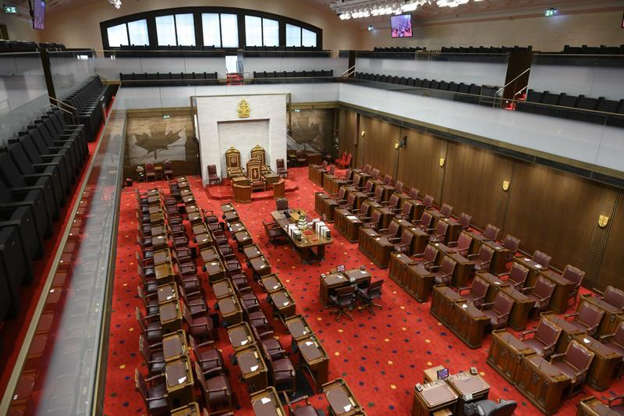Alberta
Business case for Regional Transit Service released
Joint release from the Cities of Edmonton and St. Albert
January 22, 2020
Today, the team of elected representatives tasked with examining the feasibility of a Regional Transit Services Commission (RTSC) in the Edmonton Metro Region released their report: “Accelerating Transit in the Edmonton Metropolitan Region: Building a Regional Transit Services Commission.”
The RTSC report recommends combining transit services of 13 municipalities.This would create more opportunities for inter-municipal travel, with projected savings of 850 service hours per week and $3 million per year once systems are fully aligned in 2026. The report was led by a transition team of representatives from the 13 municipalities in the Edmonton Metropolitan Region.
“We want to provide people living in the region the best possible transit experience we can,” said City of St. Albert Councillor Wes Brodhead, chair of the RTSC transition team. “With a plan to address integrated regional transit, we can try to close the gap between transit and automobile trips, while decreasing congestion and giving everyone the ability to experience what the region has to offer.”
The aim of the RTSC would be to improve mobility options and the movement of people across our rapidly growing region. As reflected in the report, uniting transit services across regional boundaries will allow for a more efficient and cost effective transit service, while reducing barriers to entry for communities that want to start a new transit service and eliminating the need for duplication of services along key corridors.
“As the Edmonton Metropolitan Region becomes more interconnected and complex, doing more of the same to meet the region’s mobility needs will not be sustainable over the long term,” said City of Edmonton Councillor Michael Walters, vice-chair of the transition team. “With the region growing at such a rapid pace, we need to take a critical look at how we can better serve the next million people through transit options.”
Mobility in the Edmonton Metropolitan Region is transforming. According to the 2015 Edmonton Regional Household Travel Survey, the number of daily transit trips in the region has increased by almost 9,000 since 2005, while the number of automobile trips has increased by about 236,000. That represents one transit trip for every 26 automobile trips.
“Jurisdictional boundaries shouldn’t limit how our citizens live, learn, work and play. People around the region want and need to move seamlessly,” said Councillor Walters. “Delivering transit in a collaborative and streamlined manner lets us meet challenges head-on and take advantage of opportunities today and into the future – together.”
In February and March 2020, the individual councils of all 13 Edmonton Metropolitan Region municipalities will vote on their decision to participate in a formal request to the Government of Alberta to create a new Regional Transit Commission.
For those who choose to join, work will begin in early 2020 to seek approval from the Government of Alberta and perform the planning required to begin delivering regional transit services in 2022.
The RTSC Transition Team, made up of councillors from 13 municipalities, led the formation of the report. The 13 municipalities included are the City of Beaumont, the Town of Devon, the City of Edmonton, the City of Fort Saskatchewan, the City of Leduc, Leduc County, the Town of Morinville, Parkland County, the City of Spruce Grove, the City of St. Albert, the Town of Stony Plain, Strathcona County and Sturgeon County.
Alberta
CPP another example of Albertans’ outsized contribution to Canada

From the Fraser Institute
By Tegan Hill
Amid the economic uncertainty fuelled by Trump’s trade war, its perhaps more important than ever to understand Alberta’s crucial role in the federation and its outsized contribution to programs such as the Canada Pension Plan (CPP).
From 1981 to 2022, Albertan’s net contribution to the CPP—meaning the amount Albertans paid into the program over and above what retirees in Alberta received in CPP payments—was $53.6 billion. In 2022 (the latest year of available data), Albertans’ net contribution to the CPP was $3.0 billion.
During that same period (1981 to 2022), British Columbia was the only other province where residents paid more into the CPP than retirees received in benefits—and Alberta’s contribution was six times greater than B.C.’s contribution. Put differently, residents in seven out of the nine provinces that participate in the CPP (Quebec has its own plan) receive more back in benefits than they contribute to the program.
Albertans pay an outsized contribution to federal and national programs, including the CPP because of the province’s relatively high rates of employment, higher average incomes and younger population (i.e. more workers pay into the CPP and less retirees take from it).
Put simply, Albertan workers have been helping fund the retirement of Canadians from coast to coast for decades, and without Alberta, the CPP would look much different.
How different?
If Alberta withdrew from the CPP and established its own standalone provincial pension plan, Alberta workers would receive the same retirement benefits but at a lower cost (i.e. lower CPP contribution rate deducted from our paycheques) than other Canadians, while the contribution rate—essentially the CPP tax rate—to fund the program would likely need to increase for the rest of the country to maintain the same benefits.
And given current demographic projections, immigration patterns and Alberta’s long history of leading the provinces in economic growth, Albertan workers will likely continue to pay more into the CPP than Albertan retirees get back from it.
Therefore, considering Alberta’s crucial role in national programs, the next federal government—whoever that may be—should undo and prevent policies that negatively impact the province and Albertans ability to contribute to Canada. Think of Bill C-69 (which imposes complex, uncertain and onerous review requirements on major energy projects), Bill C-48 (which bans large oil tankers off B.C.’s northern coast and limits access to Asian markets), an arbitrary cap on oil and gas emissions, numerous other “net-zero” targets, and so on.
Canada faces serious economic challenges, including a trade war with the United States. In times like this, it’s important to remember Alberta’s crucial role in the federation and the outsized contributions of Alberta workers to the wellbeing of Canadians across the country.
Alberta
Made in Alberta! Province makes it easier to support local products with Buy Local program

Show your Alberta side. Buy Local. |
When the going gets tough, Albertans stick together. That’s why Alberta’s government is launching a new campaign to benefit hard-working Albertans.
Global uncertainty is threatening the livelihoods of hard-working Alberta farmers, ranchers, processors and their families. The ‘Buy Local’ campaign, recently launched by Alberta’s government, encourages consumers to eat, drink and buy local to show our unified support for the province’s agriculture and food industry.
The government’s ‘Buy Local’ campaign encourages consumers to buy products from Alberta’s hard-working farmers, ranchers and food processors that produce safe, nutritious food for Albertans, Canadians and the world.
“It’s time to let these hard-working Albertans know we have their back. Now, more than ever, we need to shop local and buy made-in-Alberta products. The next time you are grocery shopping or go out for dinner or a drink with your friends or family, support local to demonstrate your Alberta pride. We are pleased tariffs don’t impact the ag industry right now and will keep advocating for our ag industry.”
Alberta’s government supports consumer choice. We are providing tools to help folks easily identify Alberta- and Canadian-made foods and products. Choosing local products keeps Albertans’ hard-earned dollars in our province. Whether it is farm-fresh vegetables, potatoes, honey, craft beer, frozen food or our world-renowned beef, Alberta has an abundance of fresh foods produced right on our doorstep.
Quick facts
- This summer, Albertans can support local at more than 150 farmers’ markets across the province and meet the folks who make, bake and grow our food.
- In March 2023, the Alberta government launched the ‘Made in Alberta’ voluntary food and beverage labelling program to support local agriculture and food sectors.
- Through direct connections with processors, the program has created the momentum to continue expanding consumer awareness about the ‘Made in Alberta’ label to help shoppers quickly identify foods and beverages produced in our province.
- Made in Alberta product catalogue website
Related information
-

 International2 days ago
International2 days agoPope Francis has died aged 88
-

 International2 days ago
International2 days agoJD Vance was one of the last people to meet Pope Francis
-

 2025 Federal Election1 day ago
2025 Federal Election1 day agoOttawa Confirms China interfering with 2025 federal election: Beijing Seeks to Block Joe Tay’s Election
-

 COVID-191 day ago
COVID-191 day agoNearly Half of “COVID-19 Deaths” Were Not Due to COVID-19 – Scientific Reports Journal
-

 2025 Federal Election1 day ago
2025 Federal Election1 day agoHow Canada’s Mainstream Media Lost the Public Trust
-

 Business2 days ago
Business2 days agoCanada Urgently Needs A Watchdog For Government Waste
-

 2025 Federal Election17 hours ago
2025 Federal Election17 hours agoBREAKING: THE FEDERAL BRIEF THAT SHOULD SINK CARNEY
-

 International2 days ago
International2 days agoPope Francis Dies on Day after Easter







